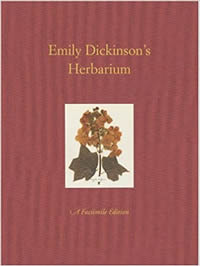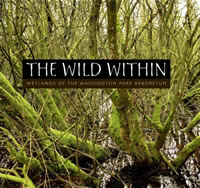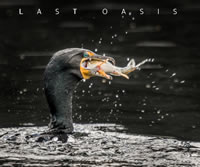 An important contributor to our Pacific Northwest literature has been Steve Solomon, now with his 6th edition of “Growing Vegetables West of the Cascades.” Each edition reflects the author’s on-going learning in his craft, the major change in this edition concerns the cultivation of asparagus. He now advocates growing these from seed, rather than starting with root crowns.
An important contributor to our Pacific Northwest literature has been Steve Solomon, now with his 6th edition of “Growing Vegetables West of the Cascades.” Each edition reflects the author’s on-going learning in his craft, the major change in this edition concerns the cultivation of asparagus. He now advocates growing these from seed, rather than starting with root crowns.
![[Wild Plants of Greater Seattle] cover](https://depts.washington.edu/hortlib/graphix/WildPlantsGreaterSeattle.jpg)
Arthur Lee Jacobson’s “Wild Plants of Greater Seattle” was received with great excitement when published by the author in 2001. In the second edition, the author has added 15 new plants to the illustrated field guide, plus more than 100 to the annotated checklist, and corrected or updated much of the nomenclature throughout.
 “Emily Dickinson’s Herbarium” is a full-size, facsimile of an album of pressed flowers, leaves, and other plant parts created in the 1840s when Dickinson was a student at Amherst Academy. There is no stated purpose or obvious order to this collection, which includes both native plants of western Massachusetts and specimens that could only come from a garden or conservatory. As a traditional herbarium the value is limited, as none of the important collection information (date, exact location, etc.) are recorded.
“Emily Dickinson’s Herbarium” is a full-size, facsimile of an album of pressed flowers, leaves, and other plant parts created in the 1840s when Dickinson was a student at Amherst Academy. There is no stated purpose or obvious order to this collection, which includes both native plants of western Massachusetts and specimens that could only come from a garden or conservatory. As a traditional herbarium the value is limited, as none of the important collection information (date, exact location, etc.) are recorded.
Over 400 specimens survive, some accurately labeled by the author using botanical guides of the day, others with descriptive if incorrect Latin binomials (for example, Petunia alba for a white petunia). Others have lost their labels. The Harvard University Herbaria staff has identified nearly all despite numerous challenges. A detailed catalog records all this detective work.
But the value of this book is not as a traditional herbarium. I see it as a piece of history, and of an early glimpse of the life of one of our country’s most valued poets. And, if you’ve ever attempted your own collection of pressed plants, you will appreciate the considerable effort taken not only to produce this book, but also to preserve it for over 160 years.
Accompanying essays document the herbarium’s conservation, the history of the family battles over Dickinson’s legacy, and securing the Dickinson collection for Harvard. Best is the article by Richard B. Sewall, “Science and the Poet: Emily Dickinson’s Herbarium and ‘The Clue Divine,'” in which he begins, “Take Emily’s Herbarium far enough, and you have her.” Perhaps. In any case, he argues for the close connection she found between science and art — an argument that could be equally well applied to William Bartram.
“Emily Dickinson’s Herbarium,” because of its size, cannot be checked out, but is available to all to study and view in the Miller Library.
Excerpted from the Summer 2008 Arboretum Bulletin.
 “The Wild Within” is a photo collection highlighting the wetlands — with a special emphasis on the animals of the Washington Park Arboretum. It is a real page-turner, but pages that you’ll return to and savor frequently with an even deeper appreciation of the value of our Arboretum.
“The Wild Within” is a photo collection highlighting the wetlands — with a special emphasis on the animals of the Washington Park Arboretum. It is a real page-turner, but pages that you’ll return to and savor frequently with an even deeper appreciation of the value of our Arboretum.
Essays provide occasional breaks in the photographs and they are well worth reading. Notables Dale Chihully, Dan Evans, Peter Steinbrueck, William Ruckelshaus and others shed their public faces to give very personal accounts of the importance of the Arboretum.
Excerpted from the Fall 2008 Arboretum Bulletin.
 “The Last Oasis,” by Seattle Times photographer Tom Reese extends a bit beyond the Arboretum in its scope, including human subjects and their impact, some of it benign but much that’s troubling. However the message is much the same — these urban wetlands are a treasure that is critical to preserve.
“The Last Oasis,” by Seattle Times photographer Tom Reese extends a bit beyond the Arboretum in its scope, including human subjects and their impact, some of it benign but much that’s troubling. However the message is much the same — these urban wetlands are a treasure that is critical to preserve.
Excerpted from the Fall 2008 Arboretum Bulletin.
 For the serious student of native plants, “The Flora of Mount Adams, Washington” will be an important work. Considered to be the most diverse flora in the state, Mt. Adams hosts several, quite distinct habitats and over 800 distinct species of plants. As there are no photographs and only botanist-oriented descriptions and identifying keys, this is not for the casual seeker of wildflowers. Instead, look for co-author Susan McDougall’s “The Wildflowers of Mount Adams, Washington.”
For the serious student of native plants, “The Flora of Mount Adams, Washington” will be an important work. Considered to be the most diverse flora in the state, Mt. Adams hosts several, quite distinct habitats and over 800 distinct species of plants. As there are no photographs and only botanist-oriented descriptions and identifying keys, this is not for the casual seeker of wildflowers. Instead, look for co-author Susan McDougall’s “The Wildflowers of Mount Adams, Washington.”
Excerpted from the Fall 2008 Arboretum Bulletin.
 Excellent photographs are the outstanding quality of “Uncommon Beauty”, a new field guide focused on an underexplored part of the Pacific Northwest — southeastern British Columbia. Written by an enthusiastic outdoorsman and native of the area, Neil L. Jennings provides a very readable description of over 200 plants, many who have ranges that extend southward into eastern Washington.
Excellent photographs are the outstanding quality of “Uncommon Beauty”, a new field guide focused on an underexplored part of the Pacific Northwest — southeastern British Columbia. Written by an enthusiastic outdoorsman and native of the area, Neil L. Jennings provides a very readable description of over 200 plants, many who have ranges that extend southward into eastern Washington.
Excerpted from the Fall 2008 Arboretum Bulletin.
 Based on his earlier, high-energy books, it is not hard to imagine Des Kennedy as the author of book entitled “The Passionate Gardener”. With wicked humor and incredible insight to both gardens and gardeners, he warns of the seven deadly sins of gardening, and extols its ten commandments. Other chapters are more reflective, but he’s always ready to see the irony and contradictions in how we conduct our favorite pursuit.
Based on his earlier, high-energy books, it is not hard to imagine Des Kennedy as the author of book entitled “The Passionate Gardener”. With wicked humor and incredible insight to both gardens and gardeners, he warns of the seven deadly sins of gardening, and extols its ten commandments. Other chapters are more reflective, but he’s always ready to see the irony and contradictions in how we conduct our favorite pursuit.
Kennedy also displays a knack for travel writing, making trips to Hawaii, Ireland, and New Zealand entertaining while packing in a lot of names and facts that would be handy for planning your own trip. This is the perfect reading companion for a winter’s evening and between the laughs, you just might soak up some good, sound gardening counsel based the author’s years of gardening in the British Columbia Gulf Islands.
Excerpted from the Fall 2008 Arboretum Bulletin.
 Bulb season is upon us—time to consider forcing a few for winter indoor color. Amongst the many bulb books in the Miller Library are a handful that focus on this delightful art.
Bulb season is upon us—time to consider forcing a few for winter indoor color. Amongst the many bulb books in the Miller Library are a handful that focus on this delightful art.
The newest is The Curious History of the Bulb Vase (2012) by Patricia Coccoris. The practice of growing bulbs suspended in a vase over water dates back almost 300 years, but it didn’t become widespread until the 1800s. For much of that century the hyacinth was the most popular of the spring flowering bulbs and also the easiest to grow this way, a boon to both bulb sellers and buyers.
The vases themselves became an art form, and collectible. The author catalogs these developments with many fine photographs and period advertisements, making the book itself a work of art. While most vases were made of glass, others came in porcelain, ceramics, and even terracotta. Planting bulbs in bowls became more popular in the early 20th century, but high-end bulb vases are still made today.
An extensive chapter recommending other bulbs to try—from amaryllis to alliums, and even acorns—makes this more than just a history book. But the history is the most fun. Especially amusing are the experiments with antipodal hyacinths, requiring a special design that allows one to grow up, while below it another grows down into the water. Quite curious!
Published in Garden Notes: Northwest Horticultural Society, Fall 2013
 An important contributor to our Pacific Northwest literature has been Steve Solomon, now with his 6th edition of “Growing Vegetables West of the Cascades.” Each edition reflects the author’s on-going learning in his craft, the major change in this edition concerns the cultivation of asparagus. He now advocates growing these from seed, rather than starting with root crowns.
An important contributor to our Pacific Northwest literature has been Steve Solomon, now with his 6th edition of “Growing Vegetables West of the Cascades.” Each edition reflects the author’s on-going learning in his craft, the major change in this edition concerns the cultivation of asparagus. He now advocates growing these from seed, rather than starting with root crowns.![[Wild Plants of Greater Seattle] cover](https://depts.washington.edu/hortlib/graphix/WildPlantsGreaterSeattle.jpg)



 For the serious student of native plants,
For the serious student of native plants,  Excellent photographs are the outstanding quality of
Excellent photographs are the outstanding quality of  Based on his earlier, high-energy books, it is not hard to imagine Des Kennedy as the author of book entitled
Based on his earlier, high-energy books, it is not hard to imagine Des Kennedy as the author of book entitled  Here in Seattle, we have our picturesque and productive P-Patches. In England, allotment gardens trace their roots to the policies of enclosure of open fields which had been held in common, and to industrialization and burgeoning urban populations. This fencing in and privatization began as early as the 14th century but was widespread through the 18th and 19th centuries, when allotments were offered as a small compensation to villagers and city dwellers who did not own private land.
Here in Seattle, we have our picturesque and productive P-Patches. In England, allotment gardens trace their roots to the policies of enclosure of open fields which had been held in common, and to industrialization and burgeoning urban populations. This fencing in and privatization began as early as the 14th century but was widespread through the 18th and 19th centuries, when allotments were offered as a small compensation to villagers and city dwellers who did not own private land. Bulb season is upon us—time to consider forcing a few for winter indoor color. Amongst the many bulb books in the Miller Library are a handful that focus on this delightful art.
Bulb season is upon us—time to consider forcing a few for winter indoor color. Amongst the many bulb books in the Miller Library are a handful that focus on this delightful art.